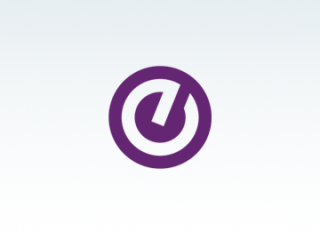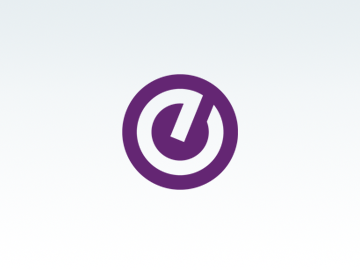Creating a community - how higher education institutions can leverage data to keep their staff and students close

Before coronavirus changed the world as we know it, higher education institutions were challenged with creating a sense of community for students, staff and alumni in a fast-paced environment, with campuses across cities and countries.
Arguably, COVID-19 has been the catalyst for many institutions who have had to review their processes, practices and culture overnight. Lecturers are scrambling to shift to online learning, staff are having to rethink how they can enroll students from afar, and universities are looking at how they can continue with graduation ceremonies.
While the full impact of coronavirus won’t be realised for a long time, one thing is certain – this reset has made higher education institutions consider how they operate at every level.
This begs the question, how can institutions create a sense of belonging and communities for students, staff and alumni, when countries all over the globe are implementing social distancing measures in a bid to reduce the spread of coronavirus?
One way universities, schools and colleges can overcome this challenge is by leveraging data to keep their staff and students close.
Make data a part of the culture
In order for universities to connect with their staff and students, they need to make data a part of their culture. In turn, they will be introduced to the strategies and competencies needed to compete with other higher education institutions that are operating with data-driven models.
When higher education institutions adopt a data driven culture, they can harness data to better understand the wants and needs of both their students and staff. In fact, a 2016 survey by Ellucian has shown that 98% of students want their schools, colleges and universities to use their personal data in order to enhance their time and experience in higher education.
Pearl River Community College (PRCC) knew they needed to respond to changes within the economy and meet student expectations, which is why they chose Ellucian Managed Services. Helping to improve the lives of their faculty, staff and students, Pearl River College was able to create a data-driven culture, while helping their students stay connected.
This is because many of PRCC’s students use their mobile phones and tablets as their chief information source. The college’s new degree-planning system is an essential tool that keeps them informed wherever they are, 24/7.
For PRCC sophomore Jonathon Dixon, the self-service aspect of the app has helped him become more independent, while keeping him informed.
He says, “It lets me be more independent instead of being dependent on my advisor. Instead of logging in from my laptop all the time.”
Connect students and staff to resources
All too often, students are forced to drop out of college or withdraw their courses due to financial pressures. This is even more so the case as many businesses are left with no choice but to reduce working hours or close their doors and let staff go in order to align with government guidelines during the pandemic.
For those households where someone’s employment has been impacted by coronavirus, their ability to pay rent, bills and buy food is jeopardised. This is even more so the case for students attending community colleges, or students from developing countries.
Universities and colleges can support vulnerable students by using their student information systems to identify at-risk students and connect them with resources and student financial aid services.
Georgia State University understands the importance of identifying vulnerable students and connecting them with financial aid, which is why they’ve been using analytics to identify students in need.
Known as the Packaging Status Promotion (PSP), this early alert system uses the data that’s collected through Ellucian’s student information system (SIS), Banner. It extracts the data and searches admissions, Financial Aid, Student Accounts, and Registrar modules, in order to identify students who have stalled, and connect them with financial aid.
Georgia State has seen some significant improvement in student engagement and behavior. Their year-on-year comparison shows that their team has served twice as many students without increasing staffing levels, and an additional 7,700 students achieved financial readiness.
Understand staff and student challenges
When universities and colleges implement a higher education ERP (enterprise resource planning system), communication between silos becomes much easier, which in turn, makes it easier to identify and solve common challenges that both staff and students are experiencing.
Staff at Odessa College in The Permian Basin region of west Texas to southeast New Mexico understood that the community has a deep need for higher education institutions that can understand and effectively serve its diverse, workforce-oriented population.
The region’s baccalaureate attainment level sits below 16%, and Stephanie Sigler, director of pathways advising at the college knew they were challenged with, “Creating and sustaining a college-going, college-completing culture in an under resourced, under-educated region.”
In order to do this, they created an initiative called Design4Completion (D4C), which gave students wraparound support, by leveraging existing student data and technology. They also implemented Ellucian Colleague Student Planning, giving students academic planning tools, student success coaches, and have faculty members the ability to determine what courses students need to complete to stay on track and graduate.
By understanding the challenges that both staff and students were facing, Odessa was able to build student and staff relationships, while helping students meet their goals. In the last five years, they have seen a 74% increase in the number of graduates, and a 15.3% increase in students earning grade C or above.
Stephen Sigler said, “The erosion of campus silos has allowed us to come together as a team. The relationships between students, faculty, and staff have vastly improved due to our collaborative spirit.
“Together, we ensure that each student is reaching their educational goals in a timely manner, and we’ve embraced innovative technology to improve efficiency and morale across campus.”
When we focus on community, we grow together
When higher education institutions leverage data to keep their staff and students connected, they’ll be on the path for future success. Data is a key asset for institutions, as it underpins strategy, supports business continuity, enables greater connectivity and enhances overall performance.
As student expectations change and the higher education industry becomes more competitive, universities need to do all they can to keep their staff and students close, even if it’s at a distance.
With our higher education-focused solutions and flexible pathways to the cloud, you’re not simply getting what you need for the next few years – you’re future-proofing your systems, and enjoying the support of our full team, ready whenever you are, wherever you are, to update, upgrade and uplift your institution’s whole software suite.
So, whatever the future holds, you don’t need to worry about catching up with any changes, just on what matters: making a lifetime of difference to your institution – and the difference of a lifetime to your students.




